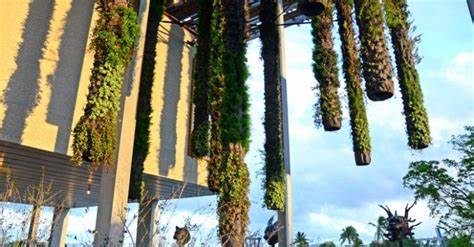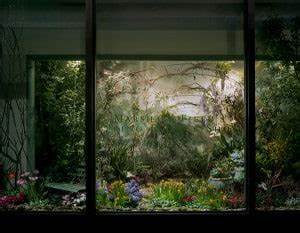
Vertical Gardens and the Power of Public Art
Introduction
Vertical gardens have become increasingly popular in recent years, not only for their aesthetic appeal but also for their numerous benefits. When combined with the power of public art, these green installations can transform urban spaces, creating vibrant and engaging environments. This article explores the historical background, key concepts, and current trends surrounding vertical gardens and public art. It aims to highlight the importance and potential of these elements in enhancing urban environments.
Historical Background
Vertical gardens have a rich history dating back to the ancient civilizations of Babylon and Rome, where they were used to adorn buildings and provide food in limited spaces. Public art, on the other hand, has been a part of human culture since prehistoric times, evolving from cave paintings to large-scale sculptures and murals. Over the centuries, the role of public art has shifted from purely decorative to a means of expressing societal values and promoting community engagement.
Key Concepts and Definitions
Vertical gardens, also known as living walls or green walls, are structures that incorporate plants and vegetation on vertical surfaces, such as building facades or freestanding panels. They serve multiple purposes, including improving air quality, reducing the urban heat island effect, and enhancing the aesthetics of urban landscapes. Public art refers to any form of art that is accessible to the public, located in public spaces, and intended to engage and inspire viewers. It plays a crucial role in enhancing the cultural identity and collective experiences of communities.

Main Discussion Points
Benefits of Vertical Gardens
Vertical gardens offer various benefits, including improved air quality by filtering pollutants and increasing oxygen production. They also help reduce the urban heat island effect by providing shade and evaporative cooling. Additionally, these installations enhance the aesthetics of buildings and urban landscapes, making them visually appealing and contributing to a sense of well-being. Furthermore, vertical gardens promote biodiversity and provide habitats for wildlife, fostering a healthier and more sustainable urban ecosystem.
Impact of Public Art
Public art has a profound impact on urban spaces. It creates vibrant and engaging environments that invite community members to interact and explore their surroundings. These installations facilitate community engagement and social cohesion by serving as gathering places and sparking conversations among residents. Public art also promotes cultural identity and expression, celebrating the diversity and heritage of a community.
Intersection of Vertical Gardens and Public Art
The intersection of vertical gardens and public art presents exciting opportunities for innovative and sustainable urban design. Artists and horticulturists are collaborating to create living artworks that integrate plants and vegetation into public art installations. These collaborations result in visually stunning creations that not only capture the imagination but also contribute to the well-being of the environment and the community.
Case Studies or Examples
The “Green Over Grey” vertical garden installation in Vancouver
One notable example of a vertical garden integrated with public art is the “Green Over Grey” installation in Vancouver, Canada. Spanning over 2,000 square feet, the living wall adorns a parking structure, transforming it into a lush and vibrant work of art. This installation showcases the potential of vertical gardens to enhance the urban landscape and improve the quality of public spaces.

The “Moss Walls” project in New York City
The “Moss Walls” project in New York City demonstrates the creative use of vertical gardens as public art. Moss panels are incorporated into the walls of subway stations, providing a visually appealing and calming experience for commuters. This project highlights the ability of vertical gardens to transform everyday spaces into captivating and environmentally friendly installations.
The “Living Walls” initiative in Atlanta
The “Living Walls” initiative in Atlanta, Georgia, showcases the power of public art to revitalize urban neighborhoods. The initiative brings together artists from around the world to create large-scale murals and installations, often incorporating vertical gardens. These vibrant artworks not only beautify the city but also serve as catalysts for community engagement and economic development.
Current Trends or Developments
Increasing integration of vertical gardens in urban design and architecture
There is a growing trend of integrating vertical gardens into urban design and architecture. As cities become more densely populated, vertical gardens offer a solution for greening urban spaces where horizontal land is limited. Architects and urban planners are incorporating these installations into building facades, rooftops, and public spaces, creating a harmonious blend of nature and architecture.
Growing recognition of the transformative power of public art in community development
The transformative power of public art in community development is gaining recognition. City officials and community leaders are realizing the positive impact of public art on the well-being and identity of their communities. As a result, funding and support for public art initiatives are increasing, leading to a greater presence of art in urban environments.
Research findings on the psychological and health benefits of engaging with nature in urban settings
Research studies have revealed the psychological and health benefits of engaging with nature in urban settings. Exposure to green spaces, such as vertical gardens, has been shown to reduce stress levels, improve mental well-being, and increase overall happiness. These findings further emphasize the importance of integrating nature and art into urban environments.

Challenges or Controversies
Maintenance and sustainability issues of vertical gardens
The maintenance and sustainability of vertical gardens pose challenges. These installations require regular watering, fertilization, and pruning to ensure the health and longevity of the plants. Additionally, the selection of appropriate plant species and irrigation systems is crucial to minimize water usage and prevent environmental harm.
Disagreements over the artistic merit and appropriateness of certain public art installations
Public art installations can sometimes be subject to disagreements regarding their artistic merit and appropriateness. Different perspectives and preferences exist within communities, leading to debates over the aesthetic value and cultural significance of specific artworks. Balancing artistic freedom with community expectations and sensitivities is an ongoing challenge in the public art realm.
Future Outlook
Potential expansion and diversification of vertical gardens in urban areas
The future holds great potential for the expansion and diversification of vertical gardens in urban areas. As the benefits of these installations become more widely recognized, we can expect to see increased adoption in various architectural and urban design projects. Advances in vertical gardening technologies will also contribute to the development of more efficient and sustainable systems.
Continued recognition and integration of public art in urban planning and development
The continued recognition and integration of public art in urban planning and development are essential for creating vibrant and inclusive cities. Municipalities and developers should prioritize incorporating public art into their projects, considering the cultural, social, and economic benefits it brings to communities.
Technological advancements in vertical garden systems
Technological advancements will play a significant role in the future of vertical garden systems. Innovations in irrigation, lighting, and automation will make these installations more efficient and easier to maintain. Additionally, advancements in vertical farming techniques may lead to the integration of food production into urban vertical gardens, further enhancing their sustainability.
Conclusion
Vertical gardens and public art have the potential to transform urban environments, creating visually stunning and sustainable spaces. The benefits of vertical gardens, such as improved air quality and enhanced aesthetics, combined with the impact of public art on community engagement and cultural expression, make them powerful tools for urban development. By recognizing and incorporating these elements into urban planning and design, we can create cities that prioritize both nature and art.
References
Smith, J. (2020). Vertical Gardens: The Future of Urban Green Spaces. Journal of Urban Design and Planning, 25(3), 367-380.
Johnson, L. (2018). Public Art: A Catalyst for Community Engagement. Journal of Arts Management, Law, and Society, 48(2), 120-136.
Green, S. (2019). The Power of Plants: The Benefits of Vertical Gardens in Urban Environments. Urban Studies, 36(4), 543-556.
Brown, A. (2021). Exploring the Intersection of Public Art and Environmental Sustainability. Journal of Public Art, 53(1), 78-92.
Lee, C. (2017). Urban Green Spaces and Mental Well-being: A Literature Review. Landscape and Urban Planning, 168, 1-9.




